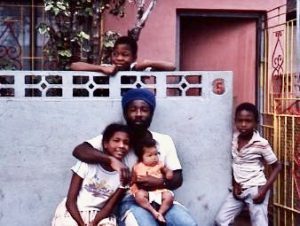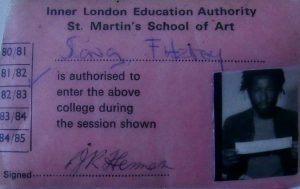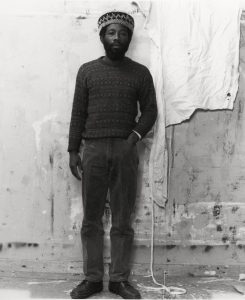
PART 3
Art Education
Near the end of the 1970s, I made plans to attend Art School in America, New York. I began living in the borough of Queens, with my uncle. I applied to Parsons School of Art, and the School of Visual Arts in Manhattan.
I was accepted at both places. The School of Visual Arts was my first choice, it was modern, innovative, and progressive. I was in! However, When it came to light I was a foreign student. The course fees went from 3,500$ to over 10,000 a year. My uncle stated I could do it. Work at nights, and attend art school during the day.
Already burnt out from the excitement of the place, the thought of doing it that way, was frightening! When would I get time to practice the things I was learning? I left New York. After a short vacation in Jamaica I returned to London, making attempts to get back on track.
1980s
I attended Sir John Cass Art School 2 days a week, to prepare a portfolio of work. I also began part-time work, as a Trainee Librarian at the British Museum. By that time, over 21. I had moved away from the family home, and started living in a shared house for students in Higher Education.

I applied to St. Martin’s School of Art, and was accepted. During my time there, I experimented with a variety of medium, including drawing, printmaking, painting, video production, paper sculpture. There were times when my photographs, were mistaken for paintings.
A few years after leaving art school, I attended City University at the Barbican in London, and completed a Masters Degree in Arts Administration and Policy. Apart from my studio practice, like many artists of colour working within the public arts system. I conducted workshops through Art in Education. Participated in Art Residences, Exhibition Tour Guide, and Invigilation.

Black Arts
Through the initiatives of Eddie Chambers, who was based in Bristol at the time. I participated in the U.K. Black Arts Movement.
Artist placed in the category of Black, needed an organisational format to be seen and heard. Written by Kwesi Owusu, the book titled “The Art That Britain Ignores” explained clearly what was happening at that time.
Black as identity, is a political and social construct. Currently, we have moved way beyond the superficial ideas, relating to the colour of skin. In the real world, similar to the colour of eyes, these things have very little significance, in comparison to the major human dilemmas facing us all.
Now! the category Black, apart from the politics of race relations, holds very little meaning when making art. It is a topic for curators and retro-spectators, concerned with the way we were. Beyond capitalism verses socialism, some artists are looking closely at geo-politics and immigration. Others like Banksy, are exploring social cultures, reality, creativity and industry. Exciting times!
All throughout the 1980s, I was mainly based in Chats Palace, a Community Arts Centre in Homerton, Hackney, East London. I considered the times to be a period of learning, working within the community, in the World of the Fine Arts in general, and in particular the Visual Arts.